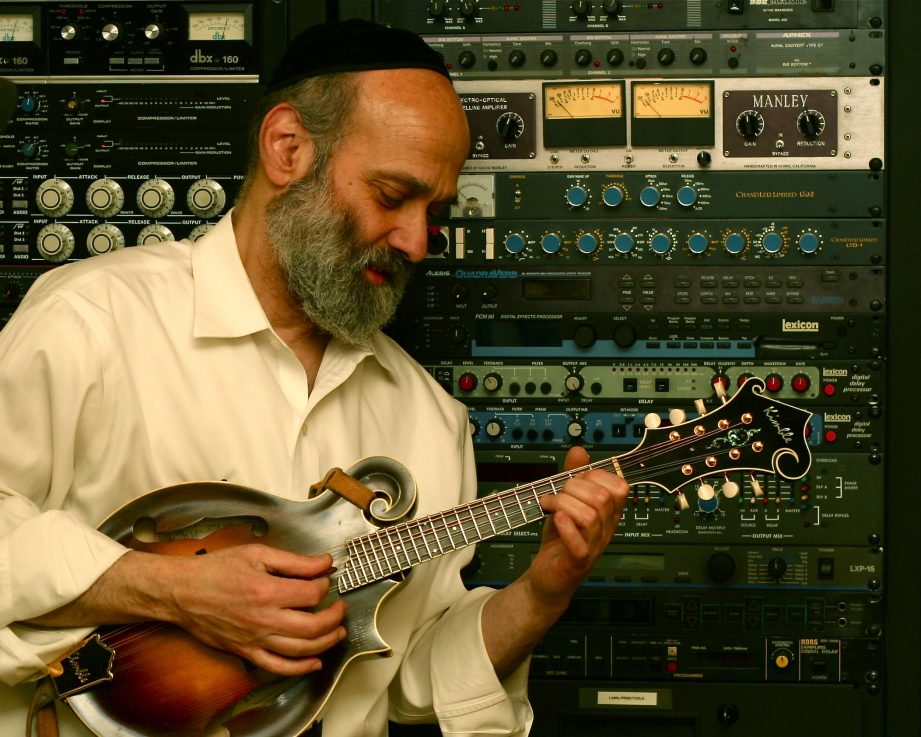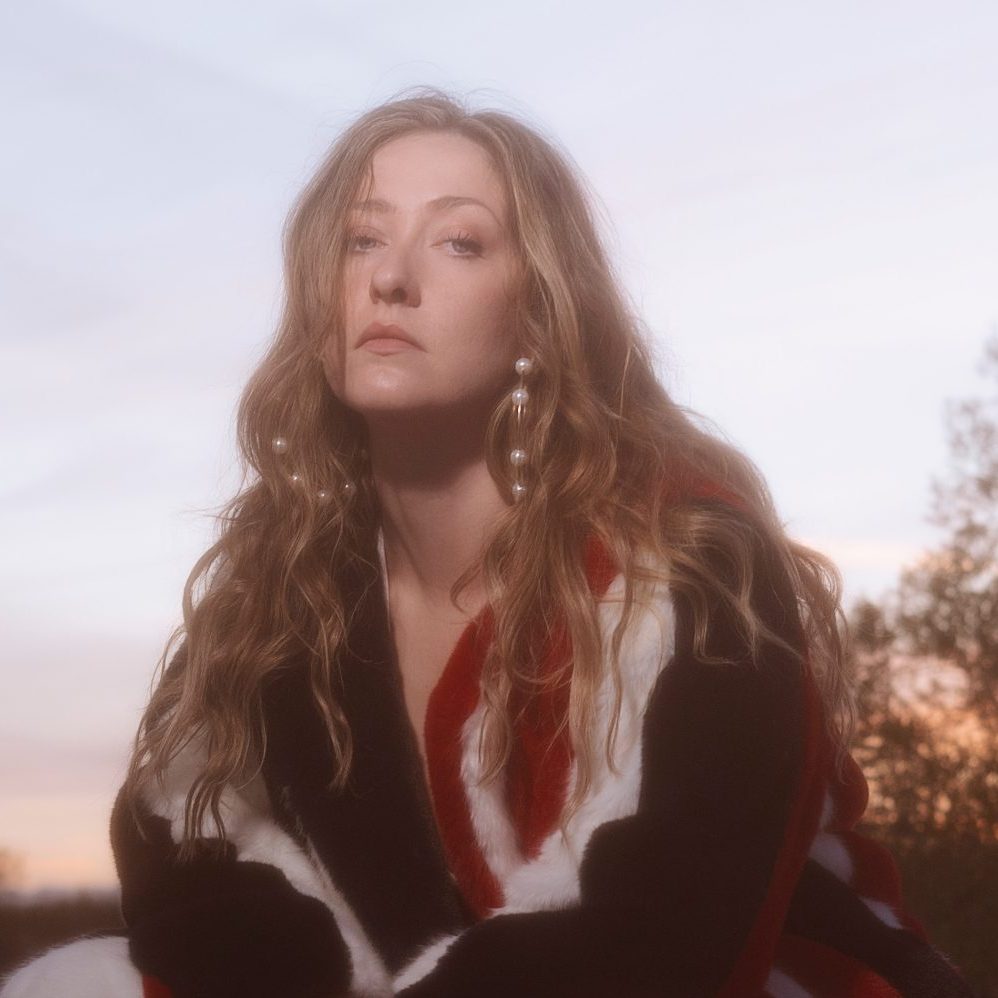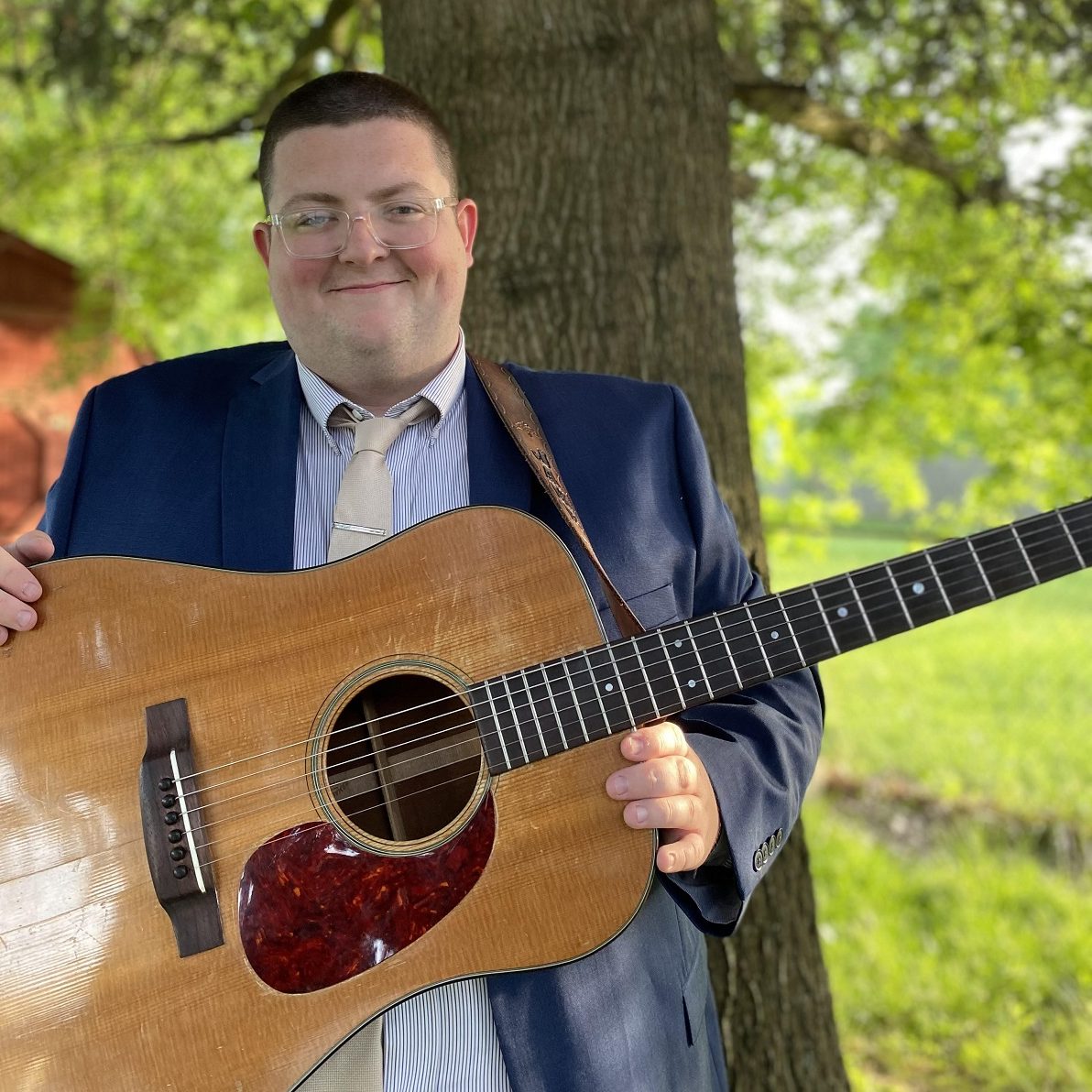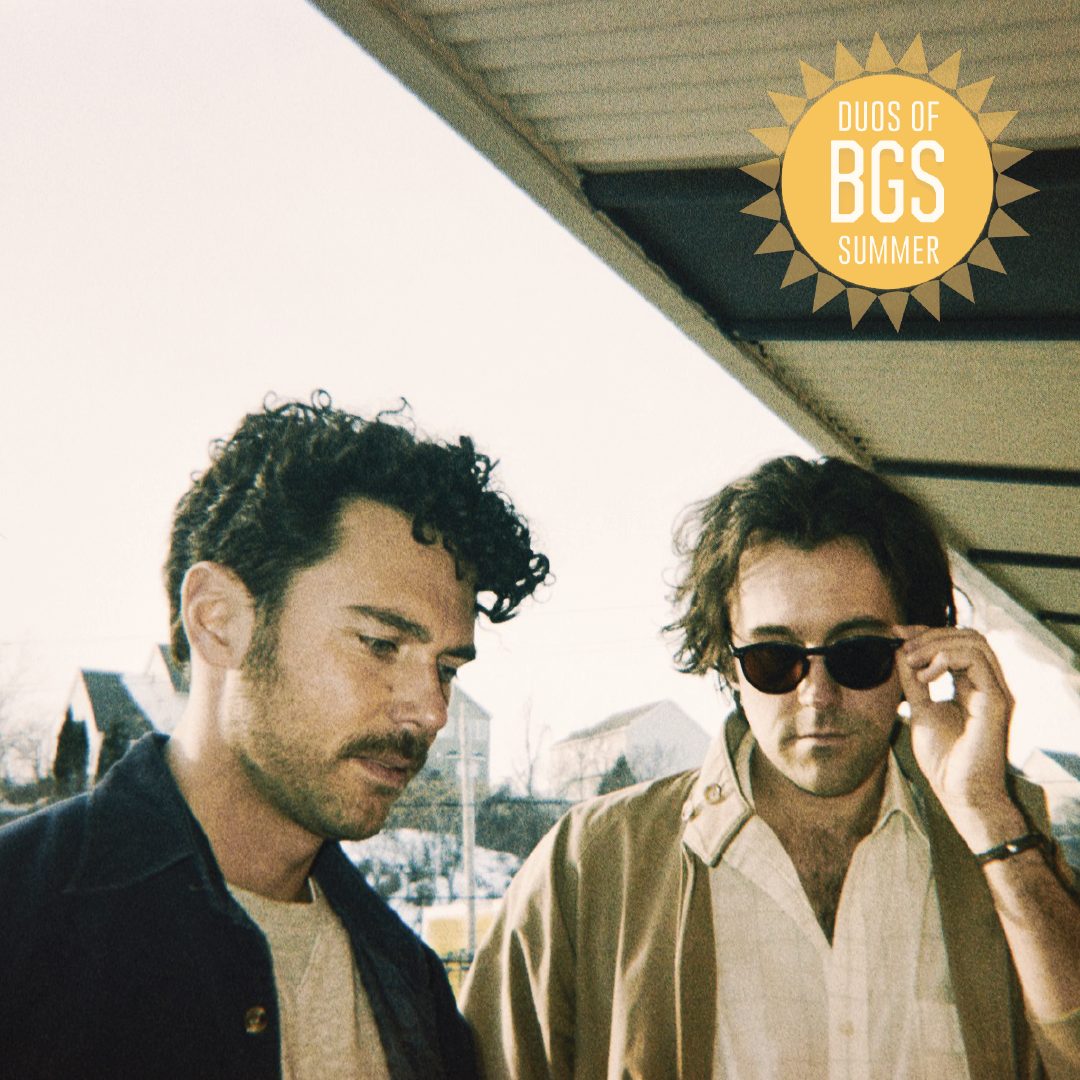Mandolinist Andy Statman is quick to deny that his identity — he’s a devout modern Orthodox Jew — has anything to do with his music. “To tell you the truth,” he says, “it never entered the picture. I was just into the music…”
However, his latest album, Monroe Bus — an exploration of traditional mandolin techniques utilized in contexts as familiar as Bill Monroe standards and as far-reaching as klezmer and jazz-infused originals — belies that denial. And, as we converse about his history in music and the harlequin nature of the album it becomes obvious that his work isn’t devoid of his identity at all. In fact, the opposite is demonstrable.
Statman’s music is, of course, archetypically and idiosyncratically his own. He, as much or more so than any other mandolinist on the scene today, is truly original. He’s reached this destination not through purposeful attempts in his music to express his identity — religious, cultural, and otherwise. Instead he simply focuses on playing the most meaningful music he can, while remaining in the moment and establishing human connection with his fellow musicians. The rest, his whole identity, shines through his art organically and effortlessly as a result. Statman is a testament to roots music’s ability — whether consciously or subconsciously, overtly or covertly — to allow its purveyors’ souls to be the keystones on which entire albums, catalogs, and genres are built.
BGS: Your record strikes me as “melting pot” music. Whether you’re playing more jazzy music or bluegrass or klezmer, you’ve always considered your music to be quintessentially American. Why is that?
Statman: First of all, I’m an American, so the culture I grew up in was an American culture. I heard things through an American ear, I saw things from an American eye, and while there might be certain regional differences, all in all it’s all pretty much the same. I grew up right after World War II, my father was a veteran. I was born in 1950, so I grew up in the early 1950s in an area in Queens, New York called Jackson Heights. It was a diverse neighborhood. Everyone got along. Everyone grew up together. The other kids were just other kids, and it didn’t matter what their background was. The music played at this time was classical music, or jazz, or square dance music, or other stuff. As a kid we used to have square dances every week in public school. I remember every year we used to have a Lebanese American come and play songs for us. At that era you were able to sort of culturally imbue almost all of the last one hundred years of American culture. It was all there to be touched and heard and seen and lived. It was there, in the air, but it was America so it was live and let live.
What was your entry point to bluegrass, then?
My brother is about eight years older than me. He went to college in the ‘60s — 1960 I guess was his first year. He got very involved in listening to like the Kingston Trio, the Limeliters, the beginning of the folk revival. Then he started bringing home records of Dave Van Ronk, Bob Dylan, and Joan Baez. That wasn’t really so much for me, but then he started bringing home some New Lost City Ramblers records and this other record that Mike Seeger was involved in, Mountain Music Bluegrass Style, which basically was recordings of the incredible bluegrass scene in Baltimore, Maryand, and Washington D.C. in the late ‘50s and early ‘60s — people like Earl Taylor and Smiley Hobbs, just an amazing collection. I really gravitated to that. I remember for my birthday he got me Foggy Mountain Jamboree, a compilation of the early, classic Flatt & Scruggs Columbia 45s. He was also involved in what they used to call jug and skiffle bands and they used to rehearse at the house. He played guitar and sang and there was a banjo player in the band who played some bluegrass and I was just very excited by that whole thing. That just did it for me. All I wanted to do was play bluegrass.
What was it about the music that grabbed your ear?
On a very simple level, emotionally, I was excited and moved by the music. It really spoke to me. The singing, the harmonies, the instrumental playing. There was an excitement to it that I really liked. I was very moved by the slower, ballad types of things, also. I started listening on the AM radio to WWVA out of Wheeling, West Virginia, which was a bastion of country music back at that time. We had a guitar in the house, my brother’s guitar, so I started learning the Doc Williams guitar method, I learned some chords, but I really wanted to learn banjo. I finally was able to get a banjo and started taking lessons.
On Sundays back then in Washington Square Park people would go down and play outside in different groups. There’d be a group playing bluegrass, a group doing topical songs, a group doing blues, so I started meeting people doing bluegrass. On these records that I liked I was getting more and more moved by the mandolin playing — it was really exciting me. Earl Taylor’s playing and I think on the Scruggs records it was Everett Lilly playing one or two solos that were just like, wow. I was getting chills from hearing this stuff. I decided I would make the switch and become a mandolinist. I had already been playing banjo and guitar for a few years. I was still in my early teens, so when I stepped into the mandolin role I already had some muscles developed and some understanding of the music.
The record, Monroe Bus, really clearly illustrates the value and the beauty that comes from allowing our musical art forms to reflect our identities. How do you think we can help foster the idea that any background or identity is valid and can be showcased through these art forms?
You know, I don’t think that way. Forgive me. I’m just into playing music, playing the best music that I can, and I’ve been fortunate that I’ve been able to study with a lot of musicians of different cultures and different backgrounds, both playing American music and music that maybe isn’t played here so much. To me, it’s all about the music. When I’m playing, I’m just playing. Identity or background is really meaningless to me. It was always like that, but at this point in my life even more so. When I’m playing I’m just looking to play the most meaningful music I can play. Those are my only real concerns.
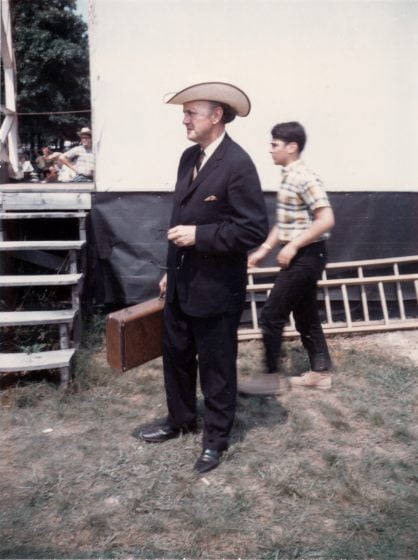
You are always blending different musical forms in these crazy, unexpected ways. How do you respond to folks that are worried that that dilutes bluegrass or that it will kill the genre in the long run? What’s your response to the typical, “That ain’t bluegrass” kind of gripe? Do you have one?
First of all, this is not a bluegrass record, obviously.
But there are undeniable bluegrass threads throughout.
Of course, but I’m not presenting myself as [pure bluegrass.] I spent a lot of time studying bluegrass, and there are always new insights and things to learn, but for me, the original blossoming of bluegrass is where it’s at, where it reached its fullest expression. If I’m going to listen to bluegrass, I’m probably going to listen to bluegrass from before 1970. Not to say that what came after is bad, this is just my preference. The feelings and creativity of that particular period, to me, are really unsurpassed. And while the technical level might have gotten better, this doesn’t necessarily make for a more meaningful, deeper music, it just makes for a more athletic music. [Laughs]
Listen, people have to be who they are. It’s just music. There are always going to be people who hear things differently, who want to add or subtract things, and if you don’t like it, then you don’t like it. I can see that there’s a strong core of people who are really interested in playing music in the mode of what was played in the ‘40s, ‘50s, and ‘60s. I think there isn’t any danger of that not continuing.
I do believe, though, that it’s important for musicians to really try and master a traditional style. Because, if you’re going to try to build on something, you really need to understand where it’s coming from, to be able to relate to that music on its own terms. Which is getting back to the roots of all this music and being able to speak that language naturally, in your own way and find your own voice in it. You’ll understand phrasing, variation, improvisation, how to play melodies, how to bring out what’s in the melody, how to play rhythm. Without that firm grounding in a particular style, particularly when we’re talking about folk music, it won’t click.
It’s interesting that you say that, because I think that a song that perfectly illustrates what you’re talking about on the record is “Raw Ride,” a sort of version of Bill Monroe’s “Rawhide.” I love this version because the song is so iconic, but you’re still turning it on its ear. You’re demonstrating that foundation that you’re talking about, but you’re finding your own voice in it. How did you come up with this arrangement?
Well, I’ve been playing the tune for years. “Rawhide” is one of those tunes that, if played in the traditional Monroe manner, requires a lot of energy. It’s always a question of is it worth the energy for the payoff? [Laughs] It usually is. There’s obvious extensions of the melody or the chords that you hear if you’ve been involved in playing other types of music. So I just sort of followed those. As with all of these things, it reflects who I am, my musical experiences, and my studies.
…When you’re writing music and playing music it really just reflects who you are and what your experiences are and how you live. It’s a reflection of that. That’s what Bill Monroe did. His music was a synthesis, an ongoing synthesis, and he developed a certain kind of aesthetic.
When I came out of the closet and was going through that process of coming to terms with my identity as a gay man, I had a moment where I doubted my place in bluegrass. I thought maybe bluegrass wasn’t the place for me, it wasn’t a place where I could belong. Did you ever feel like your Jewishness made you question your place in bluegrass?
Not really, no. To me, it was all about the music. All the musicians I know are wonderful, thoughtful, and kind people — in the bluegrass scene and in others as well. We’re all in this together and we all have a common passion for the music. It’s a uniting force. It has a real life of its own, and we’re just sort of passing through it, so to speak. If you’re worried about the thoughts or beliefs of the people you’re playing music with, then you can’t really be playing music. Music, in its essence, is the great unifier. It can unify people in terms of ideas and feelings and speak to the commonality of everyone. At that point, all of these other things melt away.
It really has to do with heart. It’s a spiritual thing. In Hasidic teachings they say that music, particularly instrumental music, can go higher than anything. A song without words isn’t even bound by the concepts of those words. In certain ways, it’s a universal heartbeat. You can see the tremendous life force that music carries. To me it’s something that’s very sacred.
Photo credit:Bradley Klein
